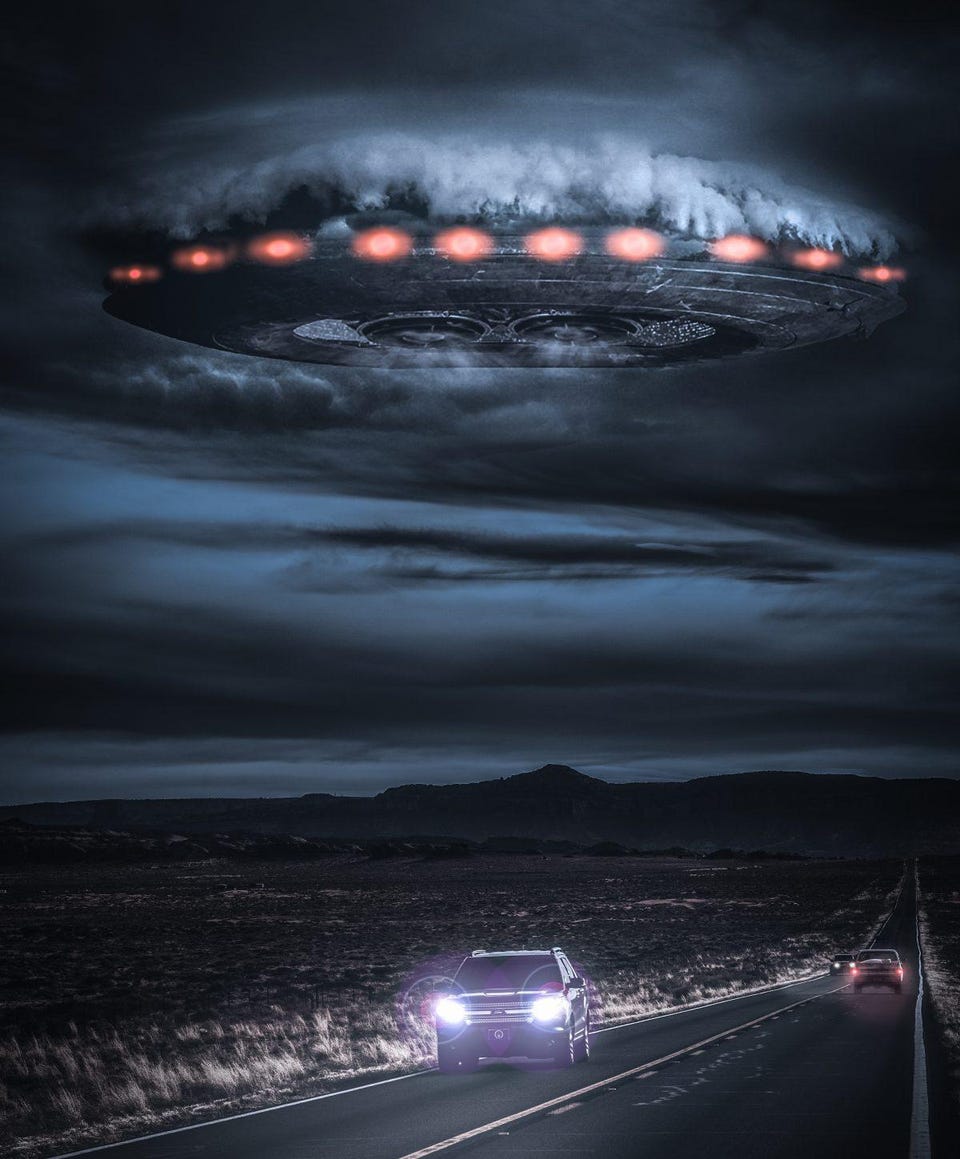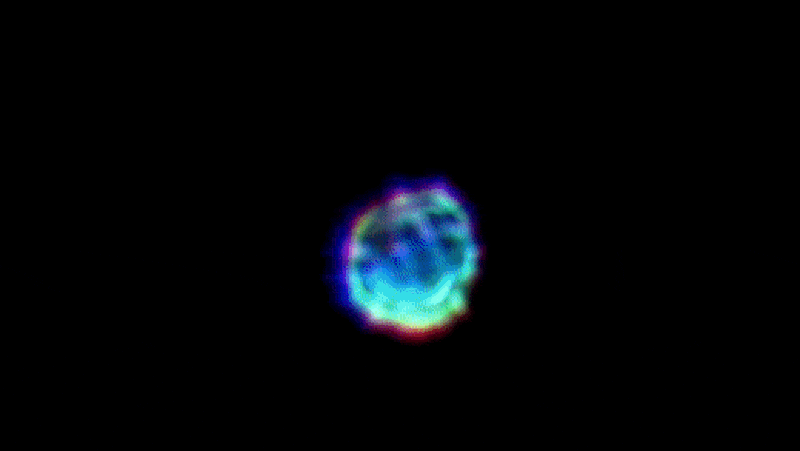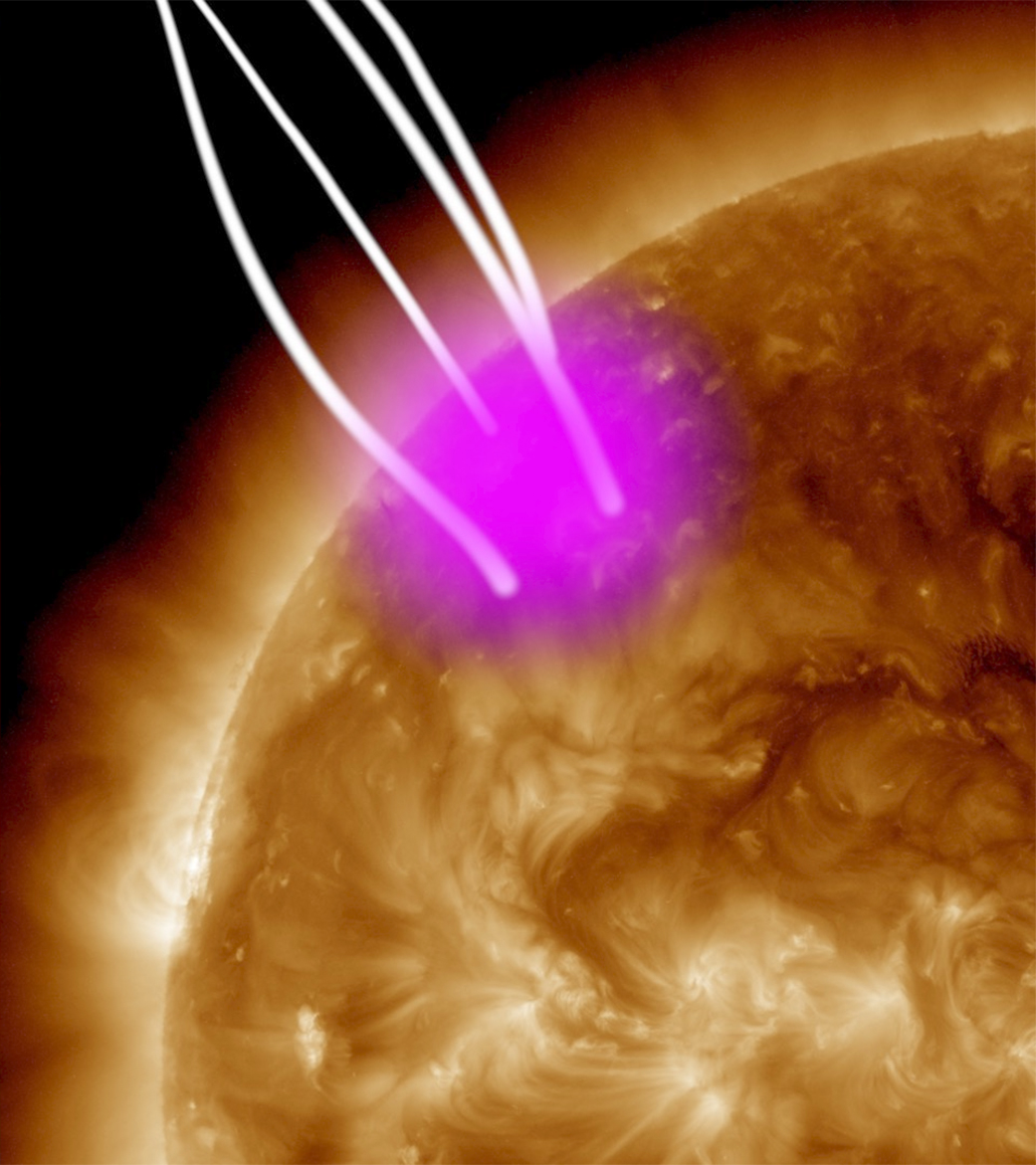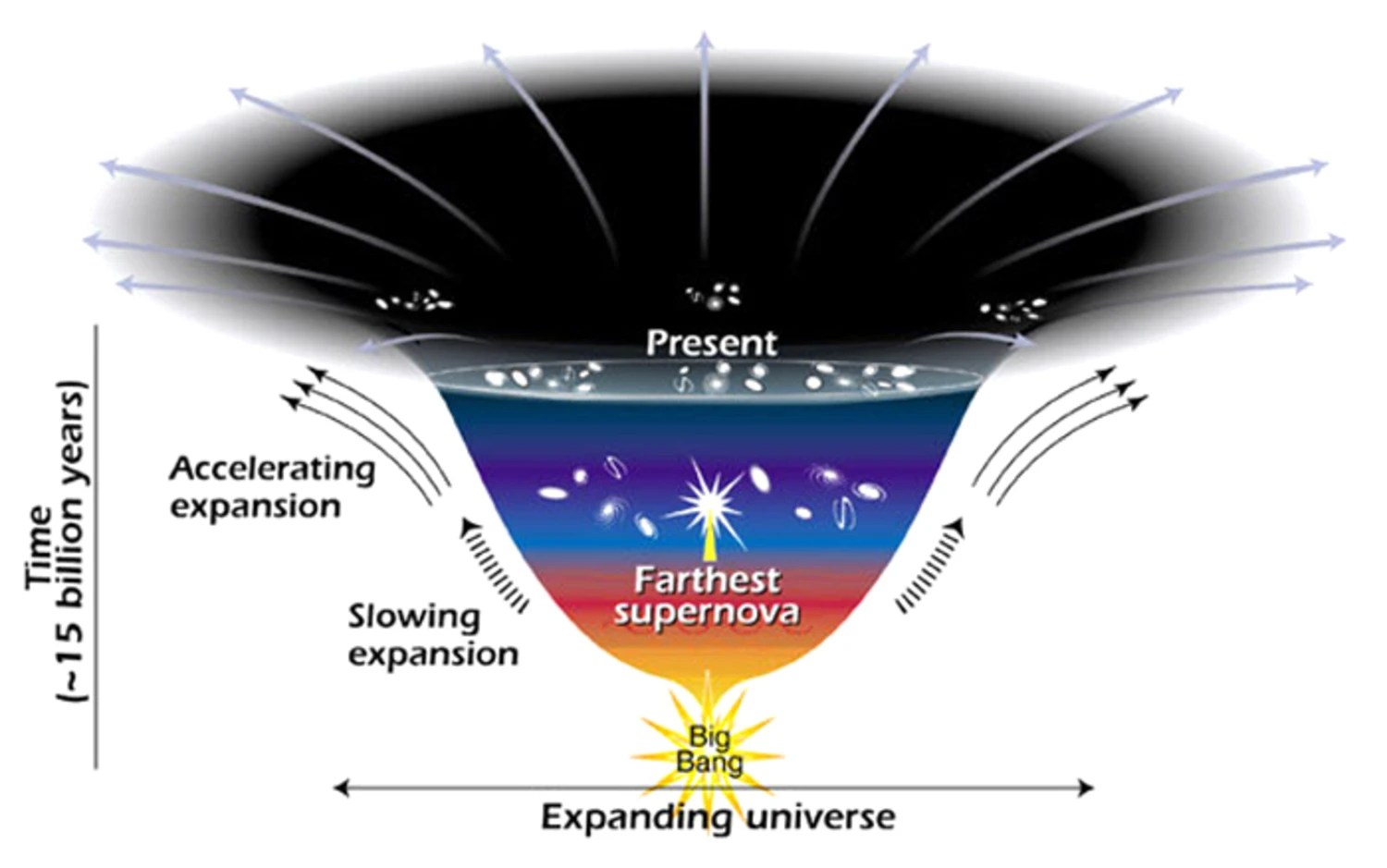Ask Ethan: Could we determine if UAPs/UFOs are aliens?

- For as long as humans have been looking up, we’ve seen objects or phenomena that have defied our conventional explanations for what we’ve known is scientifically possible.
- Many have attributed these sightings to extraterrestrial or even supernatural activity, although no conclusive proof or incontrovertible evidence supporting these claims has ever survived scrutiny.
- What scientific steps could we take to evaluate the activity of an unidentified aerial phenomenon (UAP) or an unidentified flying object (UFO) to determine if they’re actually “beyond” present Earthly knowledge? Here’s how to do it.
Whenever we’re outside on a clear, starry night, our eyes are inexorably, almost irresistibly, drawn skyward, as if we can’t help ourselves from pondering and contemplating the great expanse of space that lies above us, separated only by our thin atmosphere. Yet within that atmosphere, many sights appear that often confound us: streaks of lights, sometimes flashing and sometimes steady, sometimes colored and sometimes white, frequently appearing to move at angles that make it difficult to know precisely what the nature of this object is or how far away it truly is from us. Most of these phenomena turn out to have mundane explanations, but for a few of them, their presence remains unexplained.
Could these hard-to-identify objects, normally called an unidentified aerial phenomenon (UAP) or an unidentified flying object (UFO), be signs of something beyond what modern science has the ability to explain? Could they even, potentially, be the result of activity by intelligent extraterrestrials? We shouldn’t let our imaginations run wild; we should figure out how to answer these questions scientifically. That’s what Stephen Johnson wants to know, as he inquires about the:
“ways in which we might scientifically evaluate UAP sightings (to the extent that such a project would be possible)… [is there] a way to think about thresholds that would have to be met in order for scientists to take these supposed phenomena seriously? What are some specific types of data we’d need, in your opinion, for scientists to reach a reasonable consensus that [any particular] sighting should be attributed to, if not extraterrestrials, a phenomenon with no known Earthly explanation?”
It’s a deep question to think about, and both believers and skeptics would be interested in the answer. Here’s how I’d approach it.

Ideally, of course, you’d want to study anything you observe in as much detail as possible. If you saw something that you suspected was an aircraft (or any airborne object) that wasn’t:
- created by humans using current technology,
- a terrestrial life form,
- or a naturally occurring inanimate object, like a planet or meteor,
you’d want to know everything you could about it. You’d want to photograph it in extraordinarily high resolution. You’d want to perform a remote analysis of its composition. You’d want to recover at least a fragment of it and analyze it in a lab. And you’d want to track its three-dimensional motion over time, learning precisely how it was moving relative to us and how quickly it was accelerating. There’s an enormous difference between, “I don’t know what it was, but it looked suspicious to me” and “I have done the science and I am confident that this does not have a reasonable terrestrial explanation.”
It’s important to recognize that even though this would be something truly extraordinary — to not only see something flying in the skies that defies a conventional explanation, but to conclude that this is indeed a signature of something so advanced that it very likely has an unearthly origin — that even the most extraordinary claims can turn out to be true. We just need to collect evidence that’s commensurately extraordinary with the claims being made. For if we see something that presents us with undeniably robust measurements, observations, and results, we have no choice but to accept even the most unlikely-seeming conclusions if they’re what the full suite of evidence supports. Here are the types of evidence we’re likely to acquire.

Photographic/visual evidence. It’s important to recognize all of the possibilities for an unidentified object observed hurtling through the atmosphere. This includes:
- animals,
- clouds,
- meteors,
- fixed objects (planets, stars, or the Moon) in the sky,
- drones,
- aircraft,
- scientific experiments,
- military experiments or maneuvers,
- rocket-based technologies,
- and even re-entries of spacecraft or satellites from space.
Many of these objects are often difficult to identify, particularly during unfamiliar lighting scenarios, and carve unfamiliar paths in the sky compared to the more normal objects we’re accustomed to seeing. While most of us think we’re fairly good at recognizing satellites, planets, conventional aircrafts, helicopters, or even the occasional meteor, the reality is that sometimes, even a slight deviation in appearance from the conventional can cause our imaginations to run wild.
If we wanted to demonstrate that this is not just an unfamiliar, terrestrial technology at play, but represents something truly well beyond anything a human scientist or engineer could even imagine, we’d need to collect visual/photographic evidence that was of such extraordinary caliber that it could discern such a difference. We wouldn’t want to see something that looked like it could be a modern experimental aircraft; we’d want to see something that was thousands or even millions of years more technologically advanced than humanity can presently muster. We should be able to get a good idea of the size, scale, and composition of such a device or craft, as well as its distance from/to us. This can be easily accomplished with the appropriate modern technology, with radar or laser ranging (reflecting light of some type off of the object in question) providing an excellent distance estimate, and with continued imaging allowing us to deduce its velocity and acceleration over time.

Some properties that would be extraordinary include:
- size, as no aircraft has ever been built with a wingspan greater than about half a kilometer,
- mass, as no aircraft heavier than a few thousand tons has ever been even proposed,
- speed, as no aircraft or spacecraft-in-Earth’s vicinity has ever exceeded more than around 17 km/s (~11 miles/second) while near our planet,
- or acceleration, as no aircraft has sustained an acceleration in any direction of more than about ~10 times Earth’s gravity for more than a few seconds.
If you can make high-quality measurements of these physical and mechanical properties and determine that the object you’re looking at far exceeds these parameters, that would qualify as exactly the type of extraordinary evidence we’d be looking for. While it wouldn’t prove “aliens,” exactly, it would clearly demonstrate the existence of something we’ve never encountered before.
Some other properties could be highly suggestive, although skeptics would require more convincing. There are many aircraft, licensed and unlicensed, that fly within the lower ~10 kilometers (~6 miles) of Earth’s atmosphere. There are far, far fewer that fly at more than ~20 kilometers (~12 miles) in altitude, limited to military aircraft, weather balloons, and satellites. If you can find and present strong evidence for something that’s:
- significantly larger than any terrestrial aircraft (including blimps and balloons),
- at a significantly greater altitude than any terrestrial aircraft,
- or that has a material composition that shows itself to be wholly novel, with properties that fail to match any known element, compound, or alloy known to humanity,
this would strongly suggest an extraterrestrial origin (or, at least, with no conventional Earthly origin) for any such observed UAP.

Video/motion capture evidence. A great many claims of UFO/UAP sightings fall into this category: where there’s some unsteady, grainy video of a hard-to-identify object either twinkling in the night or glinting in the daytime sunlight. Someone pulls out their phone (or has a mounted camera aboard a moving vehicle, either seaborne, aerial, or ground-based), and captures footage of what appears to be a small, bright, distant object in motion. Sometimes it moves steadily; sometimes it appears to be hovering; sometimes it suddenly changes its motion and zips out of sight.
What was that thing, and how did it accelerate so rapidly?
These are good questions, as eyewitness accounts often claim — without the appropriate support — that these objects moved off in a direction and with an acceleration that no terrestrial, human-made craft could ever make. But most of us would be surprised to learn how rapidly conventional aircraft, especially low-mass aircraft with an energetic fuel source on board, can change their motion. One simple example almost every child is familiar with is an inflated balloon: blow it up, don’t tie it off, and simply let it go. This extremely simple fuel source, of very slightly compressed air, can produce large and chaotic accelerations that are at least momentarily far in excess of 1g, the acceleration due to Earth’s gravity.

In fact, compressed air or standard chemical fuel technologies can easily produce accelerations of dozens, if not 100 or more, gs of acceleration, at least for brief amounts of time. It’s not uncommon for an object to go from either at rest or from being in constant (and relatively slow) motion to, in a matter of seconds, traveling at speeds that far exceed what a car or train can travel at, even at top speed. Speeds of up to 200 miles-per-hour (322 km/hr, or around 90 m/s) can be easily achieved in seconds, with even greater top speeds possible for racecars, aircraft, or rocket-powered vehicles. All of these use standard fuels, with no “novel, unearthly” technology required.
What’s very difficult, though, and what’s extremely uncommon for anything other than a rocket launch, is for a craft to experience large sustained accelerations. Rockets might accelerate at only 2g-3g under typical circumstances, but the fact that they can sustain those accelerations for several minutes, rather than only a few seconds, allows them to climb up through Earth’s atmosphere and rise into outer space, which also allows them to achieve, ultimately, speeds of thousands or even tens of thousands of km/hr (or miles-per-hour).
In other words, if you want to use video/motion capture evidence to claim that what you’re observing is evidence of some sort of motion, speed, or acceleration that isn’t possible with modern terrestrial technology, you must acquire sufficiently high-quality data.
Unfortunately, without some sort of absolute distance measurement or way to calibrate what we’re seeing on video, we have no way of knowing whether we’re looking at an object that’s:
- small, close by, and that’s moving (and accelerating) relatively slowly,
- or whether at one that’s larger, more distant, and moving (and accelerating) quickly.
If you can obtain those critical measurements, and determine the true distance to the object you’re observing, then you can start quantifying meaningful properties like its velocity and acceleration. This is actually very robust; if you can find objects that either:
- accelerate at hundreds of gs (or more) for several seconds,
- that move at speeds of hundreds of thousands of km/hr (or greater),
- or that can change their distance from you by amounts that are greater than any known rocket can travel in the same span of time,
you have evidence that you’ve observed a technology that goes well beyond the technologies that are known to humankind at present. These types of measurements would also prevent you from misidentifying an optical signature, like light reflected off of the bottoms of clouds, from a physical object that was in motion. Not only do you need to acquire unambiguous and robust data, but you need to simultaneously be aware of the ways that our senses (and sensors) can fool us, and take appropriate precautions against being fooled in exactly those fashions.

Chemical/nuclear signatures. As far as we can tell, at least at present, the only way to generate thrust comes at the cost of having to expend energy, and by using that released energy to push your object, exerting a net force on it. That usually involves the conversion of some type of stored energy — electrical, gravitational, mechanical, chemical, or nuclear — into the energy of motion, or kinetic energy. If some type of fuel (e.g., chemical or nuclear) is being expended to generate the thrust needed for acceleration, there’s going to be some type of waste product that comes about as a result of that reaction: generally released as exhaust in the opposite direction to the object’s thrust.
If we can detect and analyze the composition of that exhaust, that’s another potential signature that can help us discern the nature of the reactions that are powering the object(s) in question.
There are a wide variety of fuel sources used here on Earth, but the most common fuel sources are chemical-based and rely on combustion: where some type of molecule, typically a carbon-and/or-hydrogen-containing molecule, combines with another molecule, often oxygen or an oxygen-containing molecule, under conditions where the pressure and temperature fall within a specific range. Fuel sources often contain impurities, and the combustion process often doesn’t fully complete, meaning that mixed in with the typical products of combustion — water and carbon dioxide — are a series of other chemicals (e.g., elements and molecules), each with their own unique chemical fingerprint.

If we can identify those exhaust molecules, we can compare them with the presently known (and conceptual) fuel sources, and see if there’s a consistency or an inconsistency between them. Perhaps there are new, more efficient chemical fuel sources than the ones we conventionally know of. If we find something sufficiently “alien” in composition, that could be a strong signature of, at the very least, a highly unconventional technology.
But we can go even further.
We can also imagine a much more advanced set of technologies than what we’ve presently developed here for widespread use in aircraft on Earth in the early 21st century. Perhaps, somewhere in the galaxy, a civilization has mastered compact nuclear technologies — either fission-based or, perhaps more likely, fusion-based — and we detect signals of nuclear reactions from their crafts. By examining the nuclear, photon, or even neutrino (if we’re being ambitious) signatures from these objects, we should be able to detect a truly “beyond-modern-human” level of technology.
In either case, there will be a trail of signatures left behind by the exhaust of these objects, assuming (as we should, based on physics as we know it) that there must be some momentum-conserving sort of exhaust, we can determine whether they’re compatible with known fuel sources or whether they represent something wholly, for lack of a better term, alien to what’s known to humanity.

Antimatter/gamma-ray signatures. Finally, it’s important to keep in mind that any species that can traverse interstellar distances — which is what must have happened if an intelligent extraterrestrial species visits our Solar System — has likely achieved technologies that are far more advanced than what humanity has achieved here in the 21st century. This should especially apply when it comes to concerns like energy efficiency, where only a tiny fraction of the mass of Earth-based fuel sources get converted into energy in conventional reactions.
The most energy-efficient form of fuel that’s known in this Universe is antimatter. For any given massive amount of antimatter, you can bring it into contact with an equal amount of matter (easily available on Earth, even in the atmosphere), and both the mass from the antimatter, as well as the equal amount of mass from the matter, will annihilate into energy, typically in the form of photons. The amount of energy liberated will be equal to the total mass (of the matter and antimatter combined) multiplied by the speed of light squared: exactly as Einstein’s E=mc² dictates.
When these reactions occur, the high-energy photons produced come in the form of gamma rays, and a portion of these gamma rays — even more energetic than X-rays — will escape any amount of shielding around them to be detectable from Earth. If we can detect a substantial gamma-ray signature emanating from whatever unidentified aircraft we observe, likely directed oppositely to how the aircraft is accelerating (whether a UFO/UAP or anything else), that would provide substantial indirect evidence of a matter-antimatter reaction taking place. In particular, if the photons are right at the energy of a known matter-antimatter annihilation, such as the 511 keV energies characteristic of electron-positron annihilations, that would strongly suggest a technology that’s far beyond what any civilization on Earth has yet developed.

It might seem like these are extraordinary demands to make, and perhaps they are, by many metrics, impractical. However, “I saw something from very far away that I couldn’t quite identify and definitely didn’t recognize” is not a valid way to conduct science of any type, and if you’re expecting someone who’s scientifically minded to draw a robust conclusion about an extraordinary claim, you’re going to need to come up with evidence that’s at least as strong as the claim being made. To assert, “I have witnessed something that defies any terrestrial or natural explanation,” you’re going to need appropriately strong, convincing, and incontrovertible evidence.
Assuming that we aren’t actually going to capture, recover, and test such a craft to determine its origins and properties — or board one and investigate it, inside and out, for ourselves — there are still signatures we can look for that, if we’re careful and precise enough, could reveal the “unearthly” nature of a UAP or UFO. However, the thresholds for what merits sufficiently convincing evidence goes far beyond anything that’s ever been produced or made publicly available: not eyewitness accounts, not photos and videos, not recently released military camera footage. It may or may not indicate extraterrestrials, but anything that defies our current understanding of science and technology would signal a remarkable and possibly even a world-changing discovery indeed!
Send in your Ask Ethan questions to startswithabang at gmail dot com!





